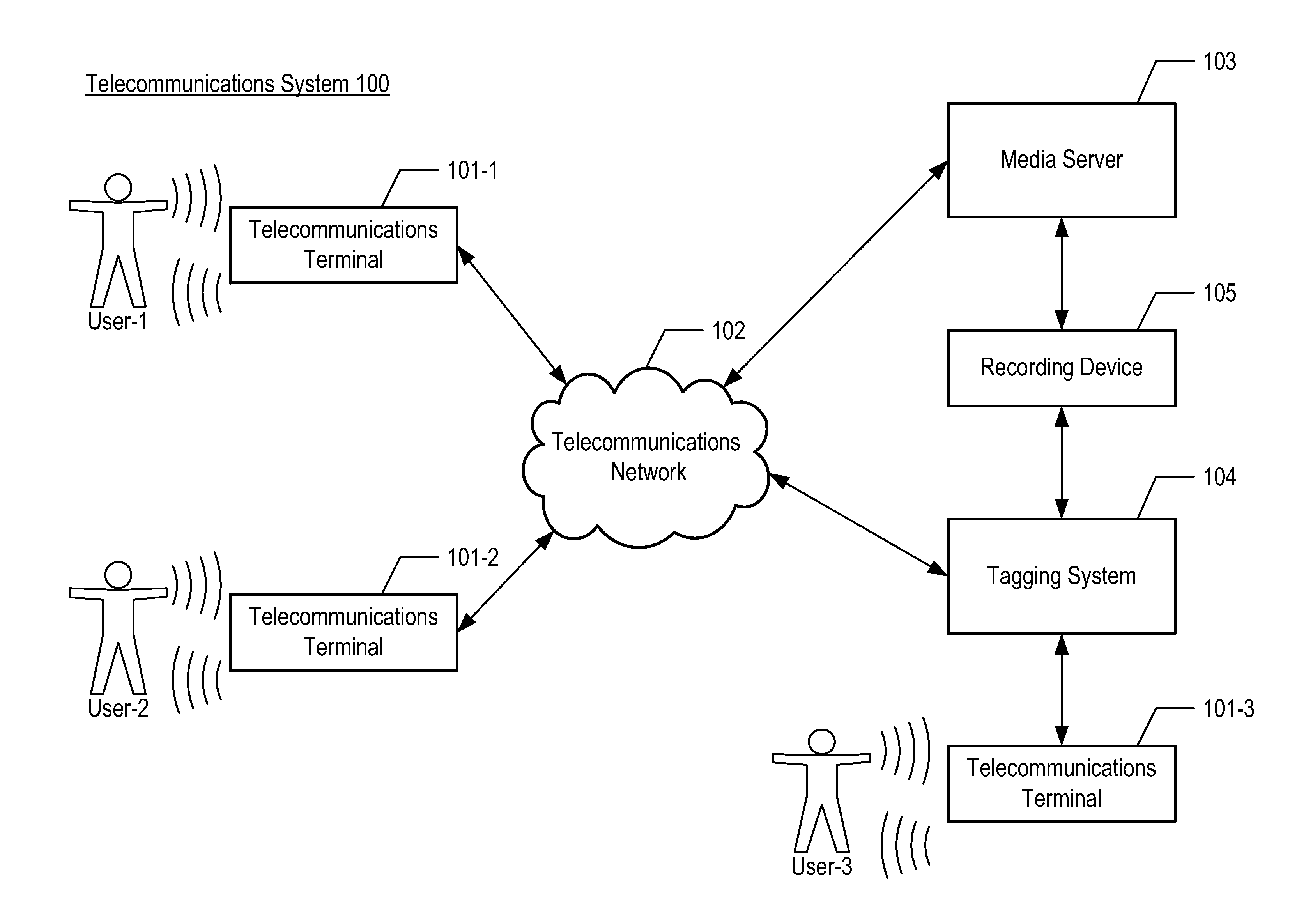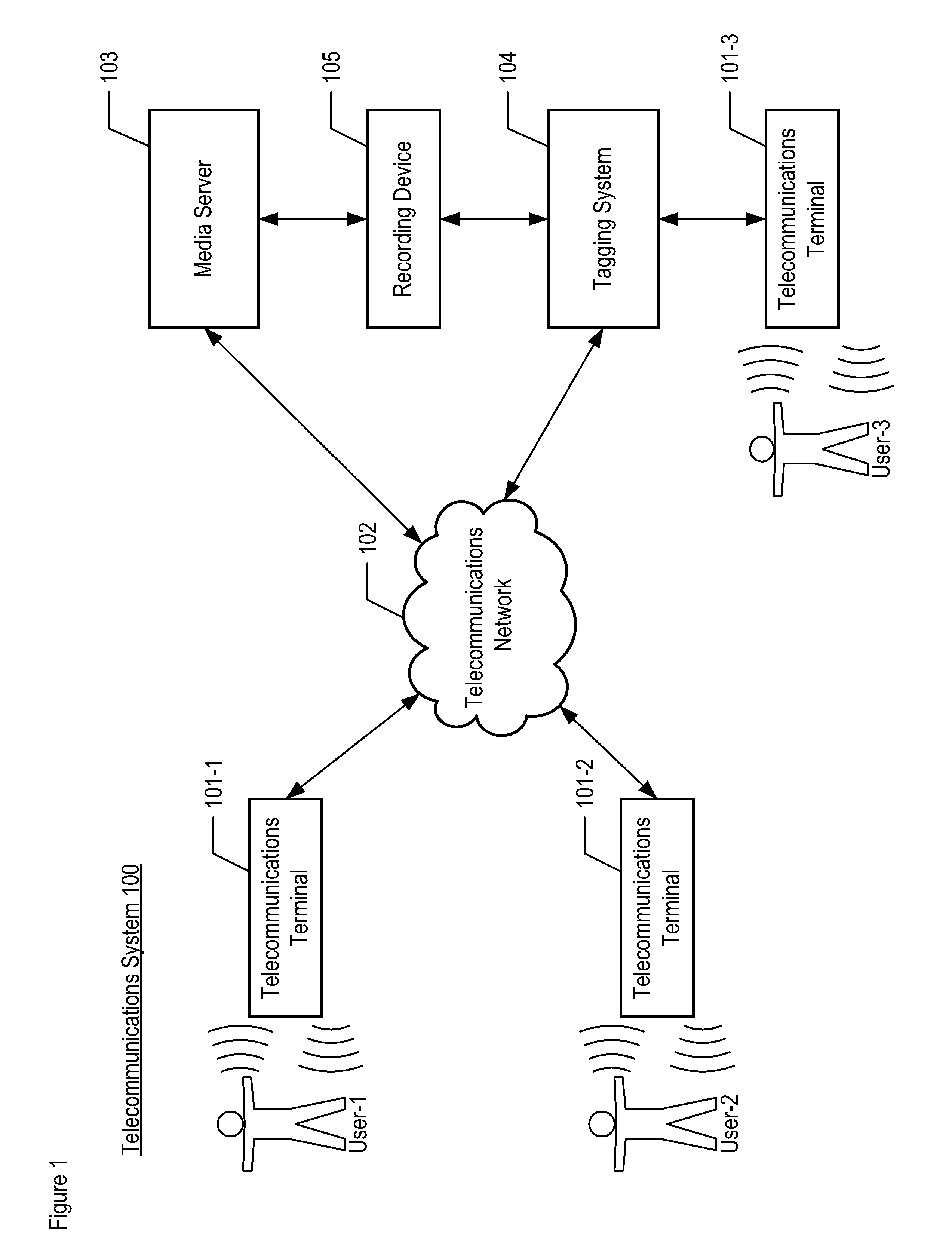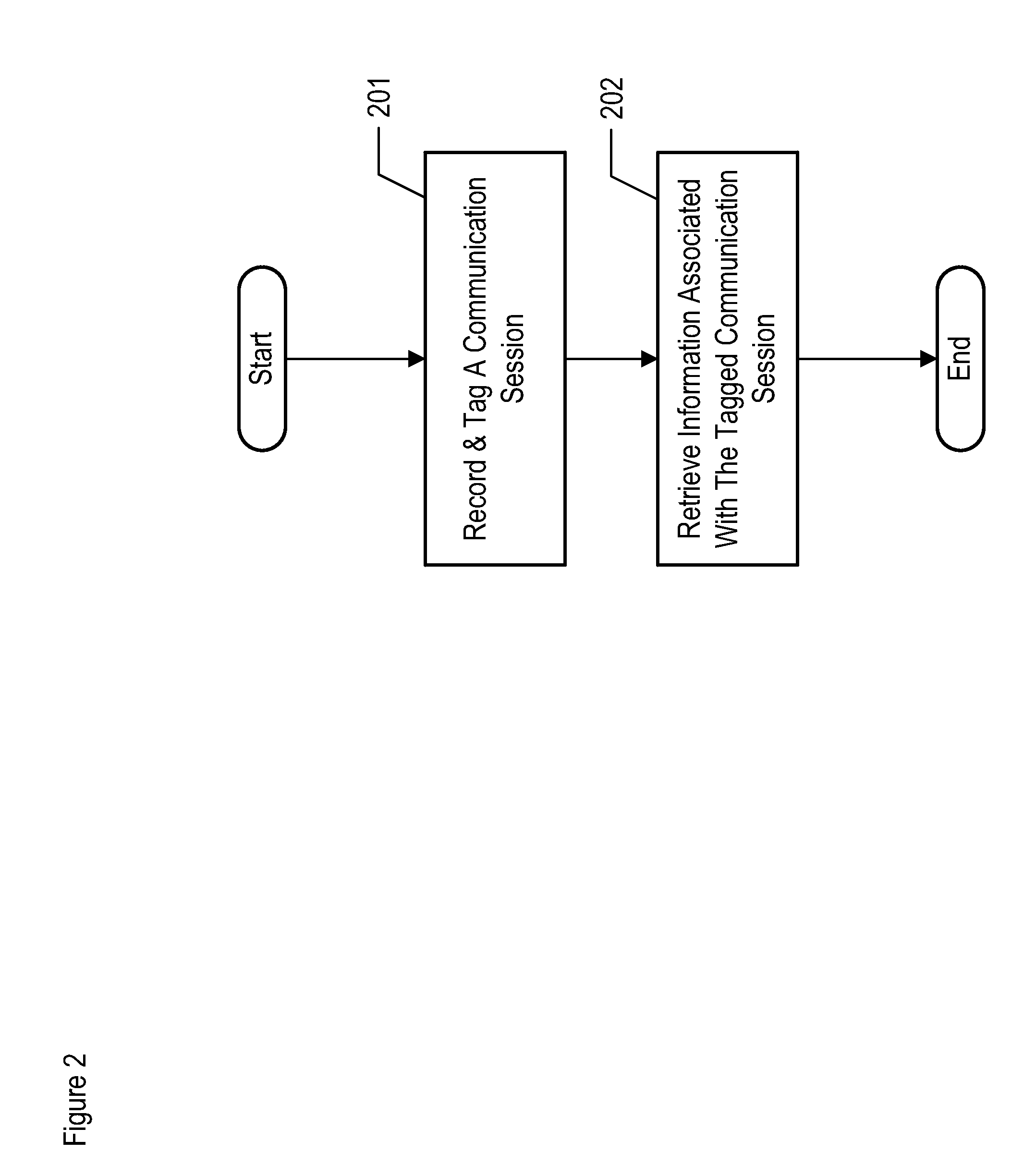Method and System for Live Collaborative Tagging of Audio Conferences
a technology of live collaboration and audio conference, applied in the field of teleconferencing, can solve problems such as inability to follow techniques, difficulty in communicating sessions with many participants, and inability to achieve follow-up barriers, so as to achieve substantial control and enhance the communicative content of the communication session
- Summary
- Abstract
- Description
- Claims
- Application Information
AI Technical Summary
Benefits of technology
Problems solved by technology
Method used
Image
Examples
Embodiment Construction
[0033]FIG. 1 depicts a schematic diagram of a portion of telecommunications system 100 in accordance with an illustrative embodiment of the present invention. Telecommunications system 100 is an apparatus that comprises: telecommunications terminals 101-1, 101-2, and 101-3, telecommunications network 102, media server 103, tagging system 104, and recording device 105. FIG. 1 additionally depicts user-1, user-2, and user-3 positioned at telecommunications terminal 101-1, 101-2, and 101-3, respectively.
[0034]Although the illustrative embodiment comprises three telecommunications terminals 101-1, 101-2, and 101-3, it will be clear to those having ordinary skill in the art, after reading this disclosure, how to make and use alternative embodiments of the present invention that comprise any number of telecommunications terminals, e.g., two telecommunications terminals, four telecommunications terminals, five telecommunications terminals, etc.
[0035]Although the illustrative embodiment com...
PUM
 Login to View More
Login to View More Abstract
Description
Claims
Application Information
 Login to View More
Login to View More - R&D
- Intellectual Property
- Life Sciences
- Materials
- Tech Scout
- Unparalleled Data Quality
- Higher Quality Content
- 60% Fewer Hallucinations
Browse by: Latest US Patents, China's latest patents, Technical Efficacy Thesaurus, Application Domain, Technology Topic, Popular Technical Reports.
© 2025 PatSnap. All rights reserved.Legal|Privacy policy|Modern Slavery Act Transparency Statement|Sitemap|About US| Contact US: help@patsnap.com



